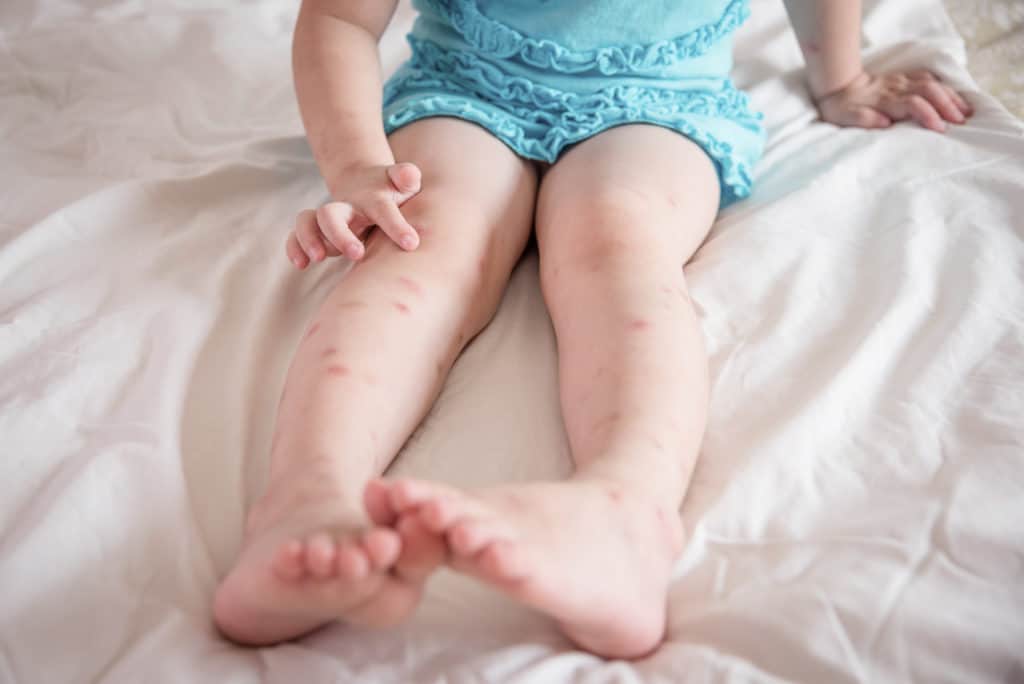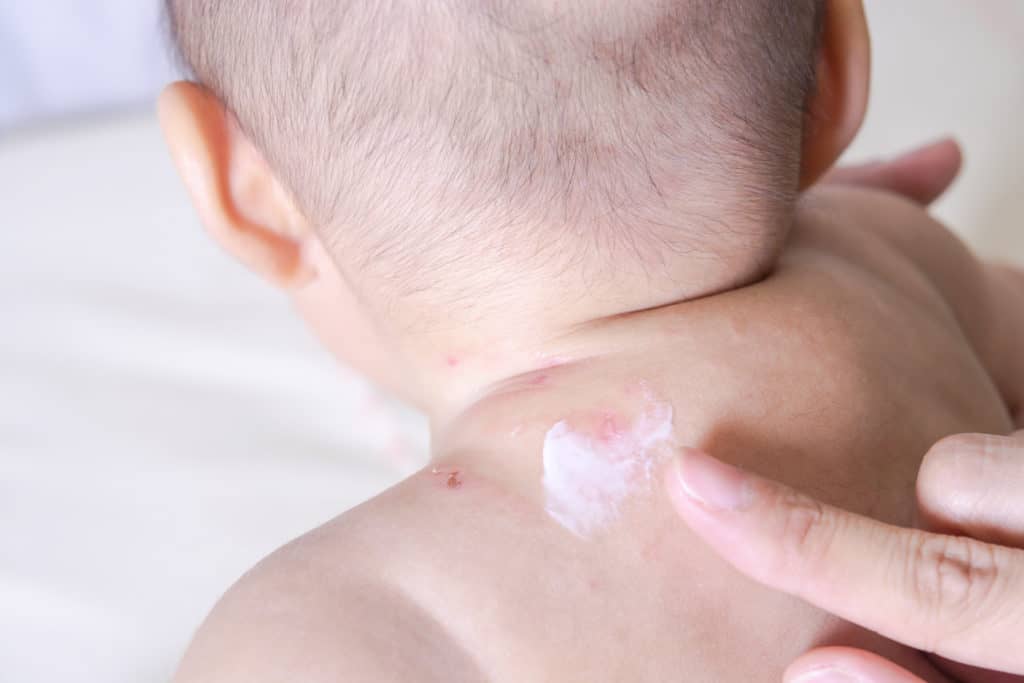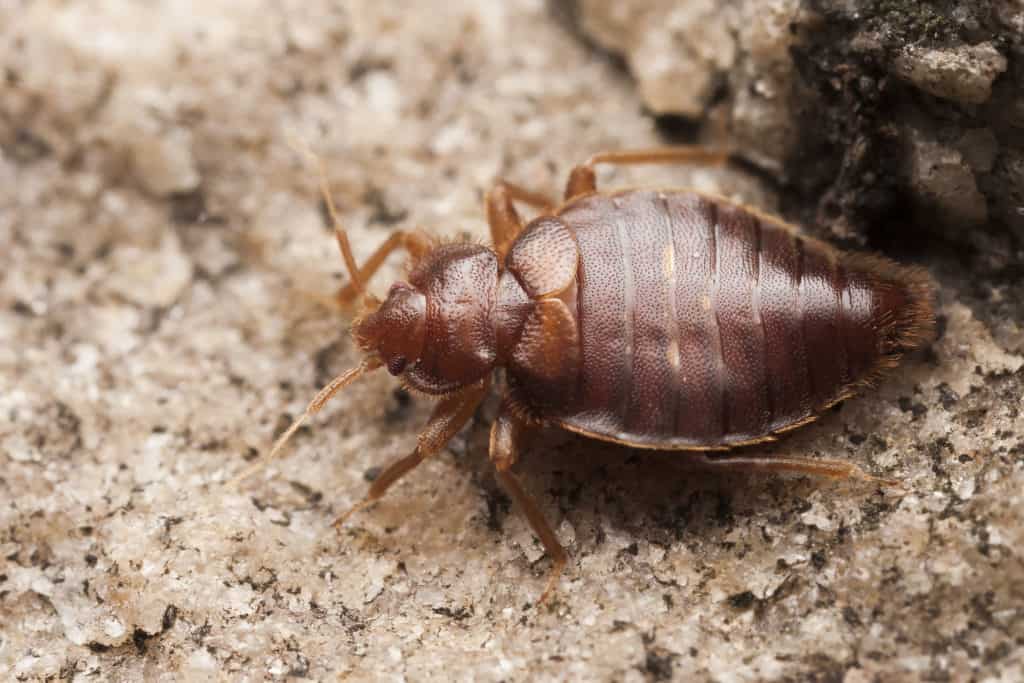Relieving Bed Bugs Bites
Relieving Bed Bugs Bites
Identifying Bed Bugs Bites
Unfortunately, a lot of bug bites look very similar, so it can sometimes be difficult to identify one from the other. Verifying what kind of bites you have is very important as it allows you to seek proper pest control services to solve your problem at its root as well as treatment for the bites themselves. Luckily, there are a few identifying factors that can help you to recognize the bites of bed bugs.
Similar to mosquitos, bed bugs leave behind itchy, raised, red spots. They tend not to travel underneath pajamas to bite, so the marks are typically found on exposed skin such as your neck, arms, legs or ankles, shoulders, feet, and hands. The bites are often found in clusters or arranged in a linear pattern. This is due to the tendency of bed bugs to bite, walk a tad, bite again, walk a bit more, and so forth. In some cases, you may notice a small dark spot at the center of the bites and after some time, some of the bites may develop into small blisters.
Another way to determine if the bites you have are indeed from bed bugs, is by identifying other signs of a bed bug infestation. Such signs and characteristics of an infestation may be:
- Small brown/red spots on sheets, bedding, or clothing indicative of bed bug droppings
- Small spots of blood on sheets, bedding, or clothing
- Small white or transparent flakes of skin/shells shed by bed bug nymphs
- Finding bed bugs themselves in your mattresses, cracks in the flooring/walls, headboards, bedside tables, pet beds, loose wallpaper, and any other areas where the tiny bugs can congregate to hide

Soothe the Itch and Burn
Thankfully bed bug bites will usually disappear on their own within a week or two. However, they can be maddeningly uncomfortable in the meantime. Just like with mosquito bites, the level of irritation that the bites can cause is dependent on the individual. The bites are itchy and can even create a bit of a burning sensation which can be extremely annoying. So, what can you do to alleviate this annoyance?
To soothe the itch and burn at home you can try one of the following:
- Apply a cold compress
- Baking Soda – Mix together baking soda and water to form a paste. Apply the paste directly to bite areas and allow to dry prior to wiping it away for itch relief.
- Witch Hazel – this can provide a minor anesthetic effect, calming the area.
- Aloe Vera – this can soothe any burning sensations
- Lemon Juice – this can help reduce swelling and redness as well as help to clean the bite site due to its natural antibacterial properties
If your reaction feels more intense or annoying, you can also use the following:
- Anti-itch creams
- Calamine lotion
- Oral antihistamines to reduce swelling
- Over-the-counter pain relievers
No matter how itchy the bites feel however, it is important not to scratch them. This will help the healing time as well as prevent the skin from breaking open and being at risk of an infection.

Rare Reactions
Extensive research has shown that it is incredibly difficult, if not impossible for bed bugs to transmit diseases from person to person. This is because their digestive systems are miraculously able to breakdown diseases – sometimes as rapidly as within a single hour. Due to this, and since bed bugs very rarely, if ever, bite more than one person within a single night, this makes it practically impossible for bed bugs to transmit diseases. However, in very rare cases, people may experience adverse reactions to the bites. These reactions may include:
- Clusters of blisters
- Increased or irregular heartrate
- Swollen Tongue
- Fever
- Respiratory strain or distress
- Nausea
- Sudden flu-like symptoms
If such symptoms occur, it is advisable that you seek immediate medical attention as you may be having a serious allergic reaction. Itching the bites can also put you at risk of some serious infections by opening the wound site. Symptoms of infection can include bleeding at the bite site, increased redness or discoloration at the bite site. In these cases, medical professionals will determine the best way to treat and relieve your condition, which may include:
- Epinephrine Medication
- Injectable Corticosteroids
- Antihistamines
- Prescription Antibiotics
Just as these severe reactions are rare, the opposite is also true. Some individuals are lucky enough to have no reaction whatsoever to bed bug bites. While this does seem rather positive, it can occasionally make it more difficult to recognize a bed bug infestation, which can lead to delayed pest control treatments.

Citations
Bed Bugs FAQs (2020) Centers for Disease Control and Prevention. The Global Health Division of Parasitic Diseases and Malaria. Available at: https://www.cdc.gov/parasites/bedbugs/faqs.html (Accessed: September 2020).
Bed Bugs: Get Them Out and Keep Them Out (2018) The United States Environmental Protection Agency. Available at: https://www.epa.gov/bedbugs (Accessed: September 2020).
Holland, K. (2019) Everything You Need to Know About Bed Bug Bites, Healthline. Medically reviewed and edited by C. Cobb, DNP, APRN, WHNP-BC. Available at: https://www.healthline.com/health/bed-bug-bites#pets (Accessed: September 2020).
Huizen, J. (2020) Bed Bug Bites: What You Need to Know, Medical News Today. Medically reviewed and edited by D. Sullivan, Ph. D., MSN, R.N., CNE, COI. Healthline Media. Available at: https://www.medicalnewstoday.com/articles/318083#control (Accessed: September 2020).
Mayo Clinic Staff (2019) Bedbugs, Mayo Clinic. The Mayo Foundation for Medical Education and Research. Available at: https://www.mayoclinic.org/diseases-conditions/bedbugs/symptoms-causes/syc-20370001 (Accessed: September 2020).
Termites Are Awful Winter Pests – Here’s Why
Termites Are Awful Winter Pests – Here’s Why Termites Are Awful Winter Pests – Here’s Why Summary: Termites can remain active through winter [...]
How to Maintain a Pest-Free Kitchen for the Holidays
How to Maintain a Pest-Free Kitchen for the Holidays How to Maintain a Pest-Free Kitchen for the Holidays Summary: This blog educates homeowners [...]
Pests That Invade Packages & Boxes: How to Prevent Hidden Infestations
Pests That Invade Packages & Boxes: How to Prevent Hidden Infestations Pests That Invade Packages & Boxes: How to Prevent Hidden Infestations Summary: [...]
Keep Pests Out of Your Holiday Gatherings
Keep Pests Out of Your Holiday Gatherings Keep Pests Out of Your Holiday Gatherings Summary: The holiday season is all about good food [...]
Cold Weather vs. Warm Weather Infestations: How Temperature Shapes Pest Activity
Cold Weather vs. Warm Weather Infestations: How Temperature Shapes Pest Activity Cold Weather vs. Warm Weather Infestations: How Temperature Shapes Pest Activity Summary: [...]
Garden Pests Do Not Hibernate Indoors – How They Attack Houseplants And What To Do
Garden Pests Do Not Hibernate Indoors – How They Attack Houseplants And What To Do Garden Pests Do Not Hibernate Indoors – How They Attack [...]

